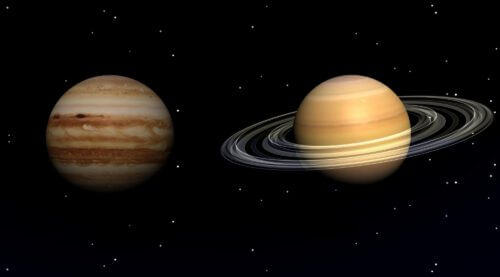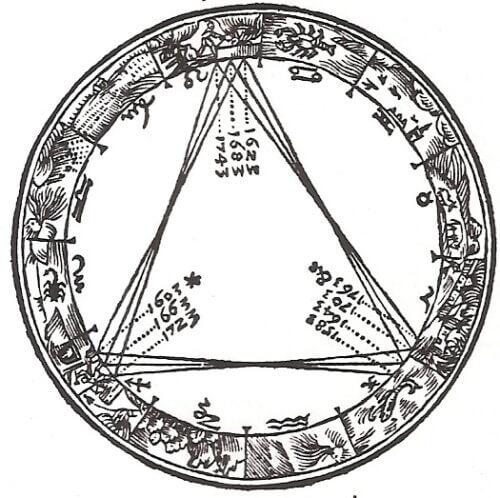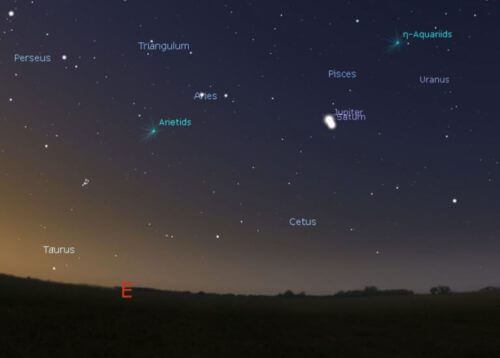The two giant planets of the solar system align at dusk and will look like a double star. Coincidentally, the event falls on the shortest day of the year - the winter solstice and close to the Christian Christmas, which once again raises the hypothesis that the shining star of Bethlehem was actually such a conjunction

A once-in-a-lifetime spectacle is set to grace the dark skies around the world, closing out 2020 with one of the best astronomical events of the year.
Dozens of planetary conjunctions occur in our skies each year, when two planets appear to be conjoining as seen from our earthly vantage point. Many of these attachments are fast-paced romances, especially those involving fast-moving inner worlds such as Mercury and Venus, the approach of the Moon to the planets and stars along the Melaka plane.
A rare conjunction of slow planets
What is unusual this time is the conjunction of two slow moving outer planets. That's exactly what's happening today, when Jupiter meets Saturn on the winter solstice, December 21. The two worlds will appear only 6.1 seconds of arc apart at 18:00 GMT (or 20:00 Israel time) they will be in the western sky, about thirty degrees east of the sun.
Although the two largest planets in the solar system coincide once a generation (about once every 20 years), this encounter is extremely close: in fact, it won't happen again until March 15, 2080. The last time was on July 16, 1623. So close Between them was 5.2 seconds of arc. However this encounter occurred lower in the sky and was difficult to observe as it occurred only 13 degrees from the sun. The last easily visible conjunction of Jupiter and Saturn was on the morning of March 5, 1226.
We can see the coupling from Israel almost at its peak
Although the timing of its closest approach means that the peak will be well visible from a longitude spanning Europe and Africa, due to their slow motion the two could be seen getting closer night after night around the world. In fact, Jupiter and Saturn will remain less than 30 angular degree apart (close enough) until December XNUMXth.
It is important to mention that all this is happening from our point of view in reality, the two gas giants are 883 million km apart. Jupiter will shine at a magnitude of minus 2, while Saturn will be 11 times fainter on the order of +0.6.
For telescope viewers, be sure to increase the magnification, as you will have a rare opportunity to see the two solar system gas giants in the same field of view. In this way you will view over 90% of the planetary mass of the entire solar system, in one convenient display.
The Corona epidemic:
- A new version of the corona virus is spreading in the UK - a genomics researcher explains
- About the claims against the corona vaccine - and all the answers
Looking back from Saturn's local vicinity, you would see Jupiter sliding close to Earth, with both only three degrees from the Sun.
The 17th century astronomer Johannes Kepler attributed great significance to the encounters of Jupiter and Saturn. Kepler was the last great astronomer who still believed in astrology and studied what he called the great conjunctions - the repetition of the pattern according to which Jupiter and Saturn return to the same astrological house every 60 years.

Kepler was not convinced by those large combinations and he came to the conclusion that the Star of Bethlehem is related to the conjunction of Jupiter and Saturn in 7 BC at dawn, in the group of Pisces associated with Judaism.
This year's meeting takes place on the border of the modern astronomical constellations of Sagittarius and Capricorn. Since the meeting takes place just a few days before Christmas, the annual debate of "What was the Star of Bethlehem?" Although references in the New Testament and historical sources from that period to the event itself are so tenuous, it is likely that we will never know for sure.

More of the topic in Hayadan:

6 תגובות
Used chocolate
Is it acceptable in Judaism to worship the stars???
Uncle
Why do we need the fear of God? Why fear things that don't exist, and on the other hand die like idiots from things that do exist?
nonsense in the blink of an eye,
Saturn is called that in Hebrew because the seventh day of the week is affected by it, therefore it is called Shabbat, actually Saturn symbolizes calamity, and the star derives its name from the Sabbath day, that Shabbat is a rest from work and by striking on Shabbat, calamity is avoided, and Saturn's temper is settled and stabilized,
Jupiter is Abraham's star, which characterizes the degree of righteousness of Abraham our father, and just as Jupiter is the largest star in our solar system after the sun itself, so unlike Abraham our father who is the first to bring the good news to the world,
Therefore, when Zedek and Saturn are together, there is a special mitzvah to observe Shabbat
When is the union? At the moment there is a gap between them
Jupiter and Saturn do not cling or even come unusually close to each other. What is happening tonight is that the two planets and the Earth pass near one straight line (one of the countless straight lines that can be passed at any time in three-dimensional space so that at least two planets pass through them - because through two points you can always pass a straight line) but it is still a distance of Hundreds of millions of kilometers and only our local-patriotism (and myopia) treats this with special attention because this time we are also on the line. That's why it's better to call the child by his name: tonight the Earth will pass through the straight line that passes through Jupiter and Saturn (and usually flutters away from terrestrial telescopes).
awe inspiring??? When there is no fear of God, do you move to star work?